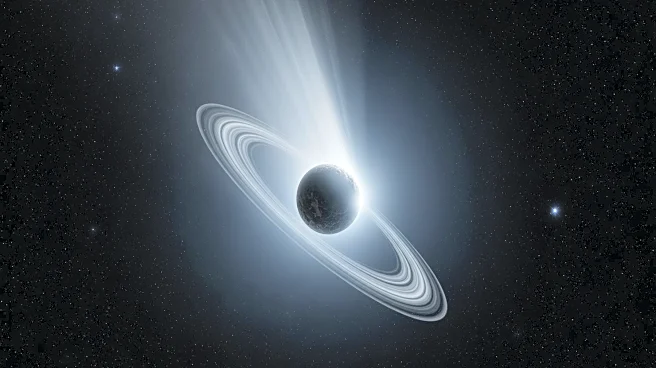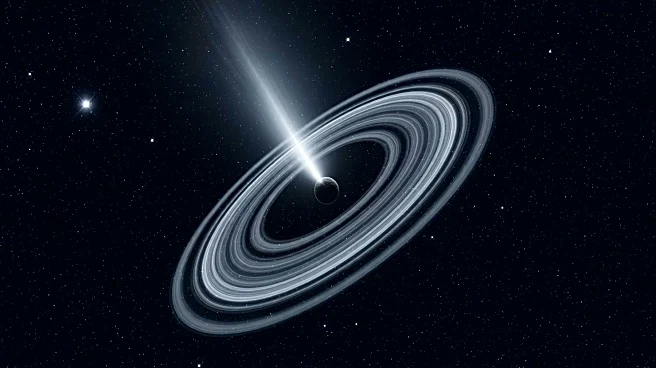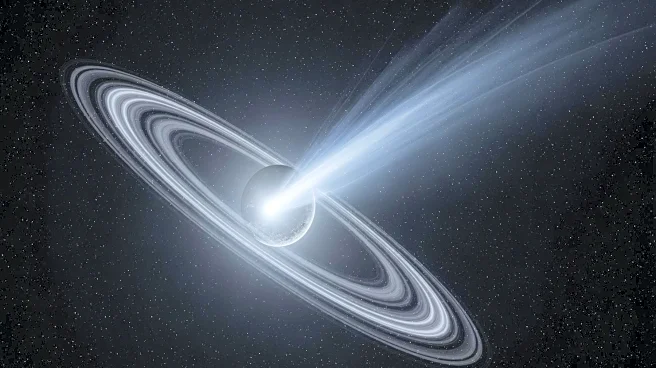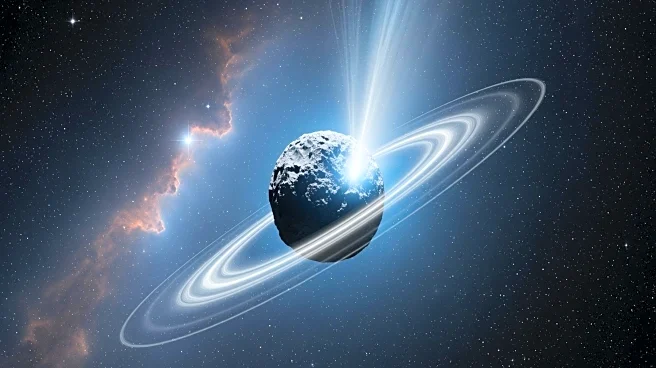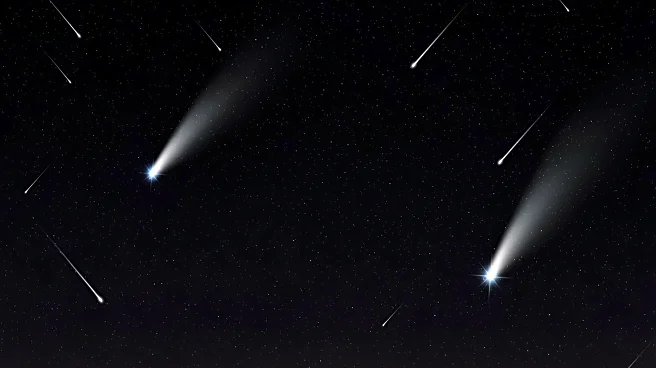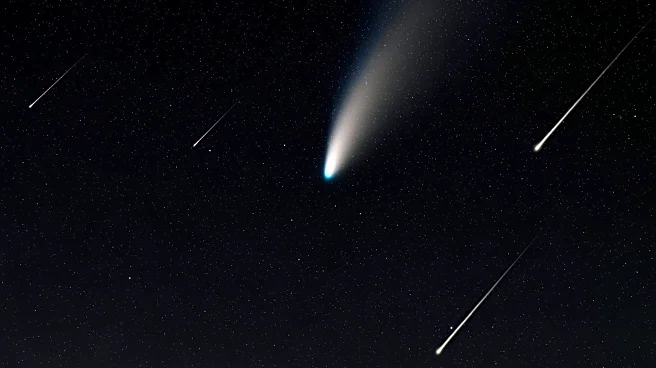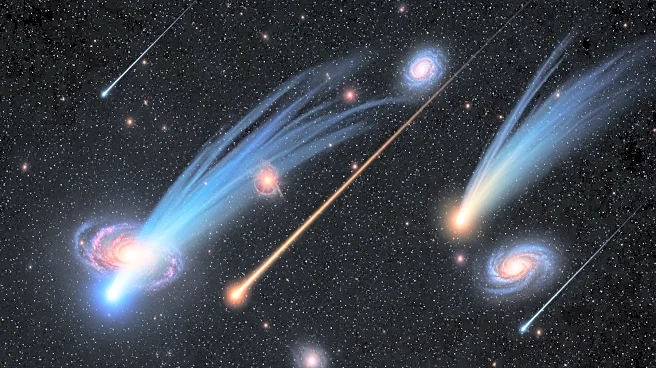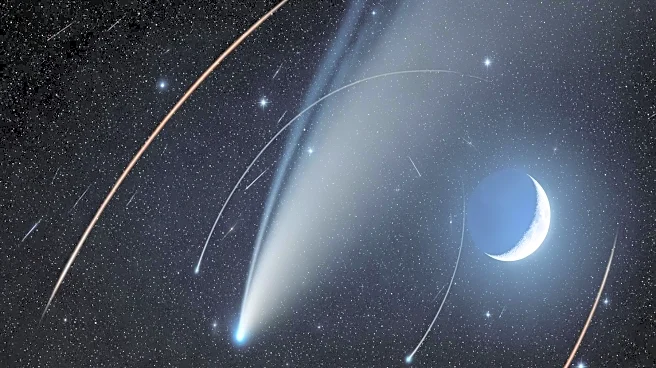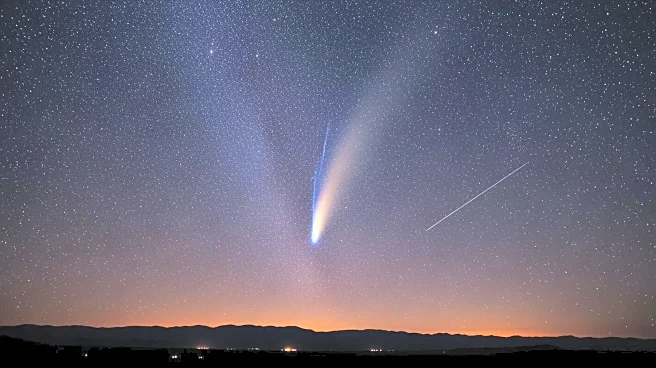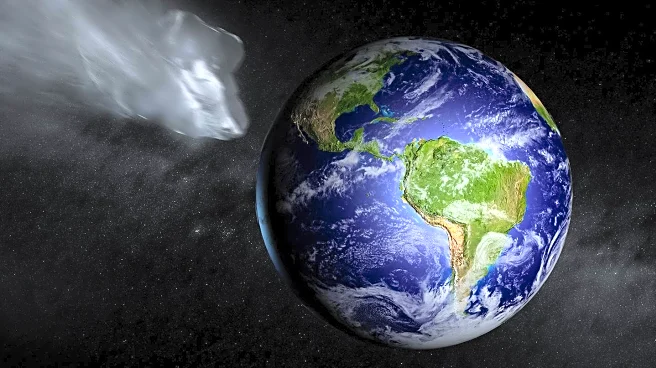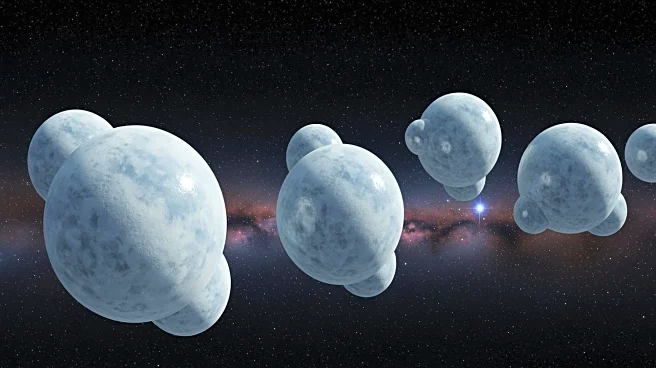What's Happening?
Astronomers have observed the formation of a ring system around Chiron, a comet-like object located between the orbits of Saturn and Uranus. This marks the first time a ring system has been seen forming
in real-time. Chiron's rings were detected using a method called stellar occultation, which involves observing the light from a distant star as it is blocked by the object and its rings. Previous observations suggested the presence of three rings, but recent findings have revealed an additional disc of material and a new outer ring. This discovery provides a unique opportunity to study the conditions that lead to the formation and persistence of ring systems, which are typically found in the cold, icy regions of the solar system.
Why It's Important?
The observation of Chiron's ring formation is significant as it offers insights into the processes that create and sustain ring systems. Understanding these processes can help scientists learn more about the dynamics of the solar system and the conditions that allow such systems to exist. The discovery also suggests that ring systems may be more common than previously thought, potentially existing around hundreds of small celestial bodies. This could lead to a broader understanding of the distribution and characteristics of ring systems beyond the well-known examples around planets like Saturn and Uranus.
What's Next?
Researchers anticipate finding more ring systems around other celestial bodies as observational techniques improve. The study of Chiron's rings will continue, with astronomers aiming to understand the specific conditions that allow for their formation and stability. This ongoing research could provide further insights into the evolution of the solar system and the role of ring systems in it.
